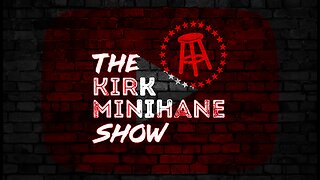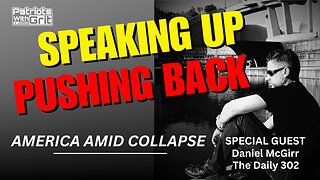Social and Emotional Learning (SEL): Good or Bad?
In this excerpt of ARMSTRONG AND GETTY, the reading of and commentary about an article by Frederick Hess goes a long way to uncover an aspect of education that is the “new” product to push via the “educational industrial complex.” The article is entitled, “How Social and Emotional Learning Became a New Front in the Culture Wars” (AEI: https://tinyurl.com/yf472y2x). Here is an excerpt:
🅴🆇🅲🅴🆁🅿🆃
…There’s much about SEL that appeals. It’s stuff that good schools (and parents) have always done, and it’s been a healthy course correction for an education system that’s been test-obsessed in recent decades while giving short shrift to character development and civic formation. As CASEL board chair Tim Shriver and I noted a few years ago, “Since the dawn of the republic, teachers and schools have been tasked with teaching content and modeling character,” and, pursued responsibly, SEL can help with all of that.
In fact, while SEL can seem like a new idea, it’s more of a variation on a historical theme—that educators cannot focus only on academic mastery but must also develop the “whole child.” Readers who are so inclined can trace this impulse to John Dewey, Rousseau’s Emile, and all the way back to Plato’s Republic.
Given all this, SEL’s surging popularity is no great surprise—especially after the dislocations of the pandemic. In fact, SEL was already flying high in 2019 when that Aspen commission issued a blockbuster report, backed by an impressive array of funders and endorsees. The research on persistence that fueled Angela Duckworth’s New York Times best-seller Grit? That’s SEL. So is psychologist Carol Dweck’s influential research on “growth mindset.” And two years of pandemic, during which kids were lonely, isolated, and suffered walloping blows to their social and emotional well-being, have only turbocharged SEL’s ascent.
But as with so many well-meaning education reforms, SEL has a Jekyll-and-Hyde aspect. As has been true with the Common Core and “anti-racist education” (née critical race theory), SEL can be reasonably described both as a sensible, innocuous attempt to tackle a real challenge and, too often, an excuse for a blue, bubbled industry of education funders, advocates, professors, and trainers to promote faddish nonsense and ideological agendas. The latter is why SEL invariably comes up as a justification for doing away with traditional grading, eliminating advanced math, subjecting students and staff to “privilege walks,” or teaching first-graders about gender identity.
School safety illustrates the fine line that SEL seeks to walk. It’s a truism that kids who are relaxed, comfortable in their own skin, and able to get along with peers are less likely to disrupt classrooms or bully other kids. So, it’s easy to argue that promoting SEL can make schools safer. However, SEL proponents also tend to favor “restorative justice” as the preferred approach to accomplishing that goal. The problem is that the evidence for “restorative justice” is unconvincing, at best. Rather than suspending or expelling dangerous students, schools sit them down to share their feelings. While this may sometimes be life-affirming in the right hands, there’s good reason to believe this stuff makes schools less safe when done rashly or clumsily (as is too often the case)……
🆄🅽🆀🆄🅾🆃🅴
𝐑𝐄𝐀𝐃 𝐌𝐎𝐑𝐄 𝐀𝐁𝐎𝐔𝐓 𝐈𝐓 𝐇𝐄𝐑𝐄:
■ ‘Social and Emotional Learning’ Programs Are No Substitute for Mothers (https://tinyurl.com/49j5ptse)
■ ‘Social And Emotional Learning’ Is Often Just Cover for Progressive Indoctrination Of Kids (https://tinyurl.com/26matjun)
■ New Variant of the “CRT-virus”: “Social-Emotional Learning” (https://tinyurl.com/3bk99sy7)
𝐅𝐋𝐈𝐏𝐒𝐈𝐃𝐄:
■ No, Social and Emotional Learning is not a “Trojan Horse” for CRT (https://tinyurl.com/2p8zcc9b)
_____________
Brought to you by 𝑹𝑬𝑳𝑰𝑮𝑰𝑶-𝑷𝑶𝑳𝑰𝑻𝑰𝑪𝑨𝑳 𝑻𝑨𝑳𝑲: religiopoliticaltalk.com
-
 1:02:02
1:02:02
The Kirk Minihane Show
5 hours ago420 Show
12.3K -
 1:06:35
1:06:35
Patriots With Grit
4 hours agoSpeaking Up, Pushing Back | Daniel McGirr
8.04K4 -
 56:19
56:19
Total Horse Channel
2 days ago2024 Buckeye Reining Series | Saturday Night | 7:30 pm EST
19.1K1 -
 1:15:38
1:15:38
Steve-O's Wild Ride! Podcast
2 days ago $0.22 earnedG Eazy Opens Up About Falling Off - Wild Ride #217
15.8K11 -
 18:44
18:44
We Profit with Stock Curry
6 days agoUltimate Advice for Teens & Young Adults
21.1K12 -
 LIVE
LIVE
Lofi Girl
1 year agoSynthwave Radio 🌌 - beats to chill/game to
229 watching -
 21:00
21:00
Mr. Build It
23 days ago3 Ways to Build Garden Beds
29.7K14 -
 1:42:14
1:42:14
Jewels Jones Live
1 day agoDETRANS w/ special guest Mary Margaret Olohan | A Political Rendezvous - Ep. 78
36.8K20 -
 1:36:46
1:36:46
Roseanne Barr
1 day ago $73.82 earnedFor Love of Country with Tulsi Gabbard | The Roseanne Barr Podcast #50
152K423 -
![[D2] Rumble Featured!! Lets Go!!! #RumbleTakeOver](https://hugh.cdn.rumble.cloud/s/fw/s8/1/5/g/l/6/5gl6r.0kob-small-D2-Onslaught-Grind-w-Some-P.jpg) 6:28:15
6:28:15
CHiLi XDD
12 hours ago[D2] Rumble Featured!! Lets Go!!! #RumbleTakeOver
45.8K7